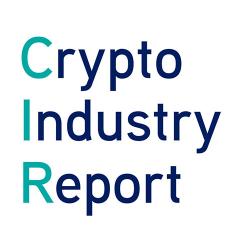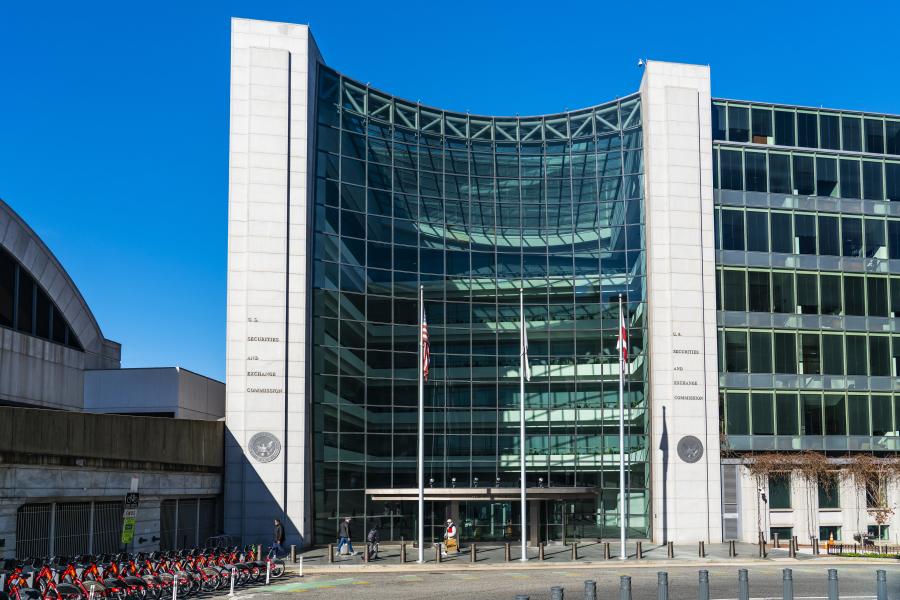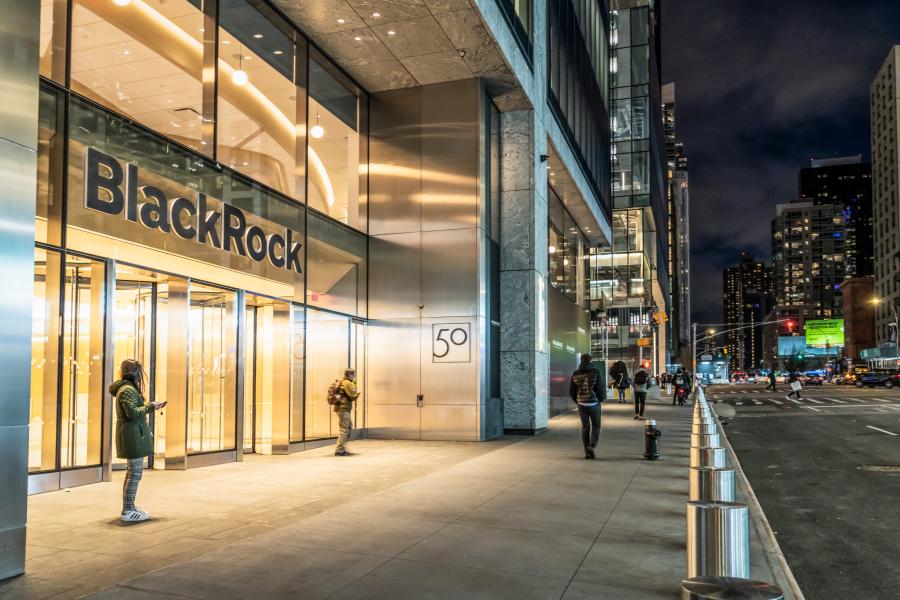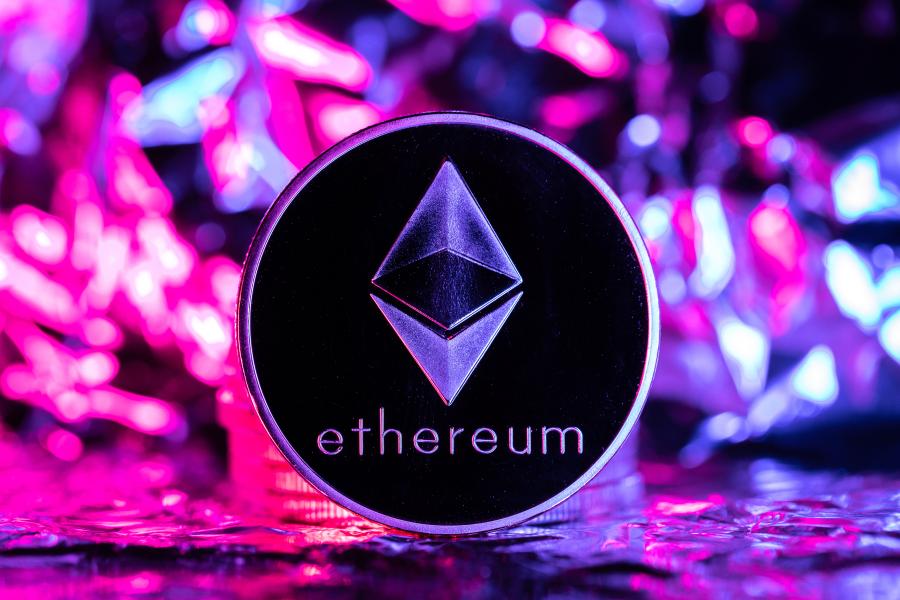CFTC versus Binance:
Clash of the titans
This week, our blockchain experts assessed the following topics
- CFTC versus Binance: Clash of the titans
- Ethereum second layer solutions: A long way to go
- ZK-rollups: The next big area of growth in the blockchain space
- Swiss payment vision: DLT to play a role
Our bi-weekly Crypto Industry Report provides you with valuable information on the global crypto industry - picked and analysed by our blockchain experts.
CFTC versus Binance:
Clash of the titans
The world’s leading crypto exchange by volume, Binance, alongside its CEO, Changpeng Zhao, and ex-Chief Compliance Officer, Samuel Lim, are being sued by the US Commodity Futures Trading Commission (CFTC).
The lawsuit claims that the crypto exchange went against the US derivatives laws by offering its trading services to US clients without registering with the relevant market regulators, the CFTC included. The independent agency further accused Binance of prioritising profits over regulatory compliance. Besides the crypto exchange, the CFTC is also suing Zhao and Lim, who have both been accused of violating various rules of the Commodities Exchange Act.
While this isn’t the first running that Binance is having with different regulatory bodies in the US, the CFTC case is the first where the exchange is being sued in all earnest. The CFTC is also pushing for a ban on Zhao, Lim, and its associates from ‘trading on registered entities, holding any commodity interest, registering or exempting with CFTC or acting as a principal, officer, or employee of a registered entity’.
While Binance’s current fate in the US markets is uncertain, its token BNB and Bitcoin took a dip following a rumour that spread around an arrest warrant for Zhao. While the rumours turned out to be just that – Binance CEO CZ believes it was intentionally stirred by a rival exchange – it’s clear that the case at hand is showing that the US is serious about protecting US investors by enforcing its laws, even against the most potent crypto players. Depending on what the CFTC can prove in court, Binance’s operations in the US might cease.
That the tides might be turning for exchanges in the US is also indicated by Bittrex’s recent announcement. The exchange, which was once one of the biggest exchanges in the United States, has been forced to close its operations following massive drops in its trade volumes due to regulatory issues. Representatives of Bittrex say that, ultimately, Uncle Sam is to blame for creating an unfavourable regulatory environment.
Ethereum second layer solutions: A long way to go
Arbitrum, an Ethereum layer-2 protocol, finally had its airdrop on March 23, 2023, and it was one of the crypto ecosystem’s biggest airdrops so far. All the relevant stats related to the airdrop and Arbitrum can be seen here. The very much anticipated event caused the Arbitrum Foundation’s website to crash shortly after users started claiming their ABR tokens. Besides introducing its own crypto asset, the airdrop was also meant to transition Arbitrum into a decentralised autonomous organisation (DAO) giving ARB token holders rights to vote on governance matters linked to the layer-2 blockchain via the chain’s DAO.
As a layer-2 solution, Arbitrum has been built atop the Ethereum blockchain to expand the network’s scalability. Arbitrum significantly reduces the on-chain transaction costs while boosting scalability. Built by Offchain Labs in 2021, Arbitrum incorporates optimistic rollups to lower the high transactional gas fees. An optimistic rollup is a scaling approach that combines several off-chain transactions in batches in a process referred to as ‘rolling up’. Once this rolling up is complete, the batch of transactions is presented as one transaction and anchored on the Ethereum blockchain, thus reducing gas prices and easing network latency.
The rollup helps make Arbitrum cheaper and faster. For instance, it costs a few dollars to transact on Ethereum, while it costs a couple of cents to process a transaction on the Arbitrum blockchain. Additionally, Arbitrum can process up to 40K transactions per second while Ethereum can, roughly, process 14 transactions per second. Two days before the airdrop, the Arbitrum blockchain processed nearly 1.66 million and 1.56 million transactions on March 21 and March 22, respectively. A report on Etherscan showed that Ethereum processed less than this number.
As it stands, Arbitrum is proving itself as a top contender scaling solution that’s showing the rest of the pack how to scale the largest smart contract blockchain in existence in today. However, there is still a lot to be done in relation to decentralisation and trust. This became quite evident just when Arbitrum launched its first governance proposal.
The Arbitrum Improvement Proposal (AIP-1) Framework proposed the structure with which Arbitrum DAO would be governed by ARB token holders. As per the proposal, the Arbitrum Foundation would be funded with 750 million ARB tokens – this translates to 7.5% of the total ARB supply – to be utilised in covering “special grants, reimbursing applicable service providers for the total setup costs and covering ongoing administrative and operational costs of The Arbitrum Foundation”.
Leading up to the vote, this became a ball of contention, raising controversy within the ARB community, with the biggest issue being the allocation of 750 million ARB tokens going to the team. As of the time of writing, around 76% of ARB token holders have voted against the decision, signalling that they don’t approve of what has been proposed by the foundation.
However, DAO voters looked stupid when the Arbitrum Foundation announced that some of the tokens had already been sold for stablecoins, with 40 million tokens being allocated to a sophisticated actor in the financial markets space as a loan and 10 million tokens converted to fiat currency to cover operational costs. Following the backlash faced from the community, the Arbitrum Foundation stated on April 2, via a forum post, that AIP-1 was not a proposal but a ratification.
The unfolding of Arbitrum’s governance proposal showed once more: Decentralised finance (DeFi) and blockchain infrastructure protocols aren’t as decentralised as many people want them to be. And as already stated, there is a lot more work that needs to be done for them to achieve trust and decentralisation.
ZK-rollups: The next big area of growth in the blockchain space
With scaling solutions like Arbitrum and Optimism live, zkSync is the next layer-2 protocol that could potentially do an airdrop after successfully launching the beta version of its zkSync Era Alpha mainnet. Matter Labs, a blockchain technology firm, developed zkSync, a layer-2 scaling solution in 2019. Similar to other scaling solutions, zkSync was developed to address the scalability issues facing the Ethereum blockchain.
The protocol utilises zero-knowledge (zk) technology, which is based on zero-knowledge proofs to process and speed up transactions and lower gas fees. Zk proofs allow transactions to be verified without the need to reveal any identifying information about the transaction itself.
As such, zk proofs are important for the whole Web3 space, Ethereum and DeFi included. This is because the technology helps to provide enhanced security and privacy in transactions. Additionally, it also enables transactions to be processed a lot faster and cost-efficiently.
Zk rollups have recently started evolving into an advanced stage where they are compatible with the Ethereum Virtual Machine (EVM). This allows them to offer more advanced smart contract capabilities. As such, solutions like zkSync are serious contenders. After Arbitrum and Ethereum itself, zkSync comes in third in terms of observed transactions per second averaged over a single day.
Swiss payment vision: DLT to play a role
The Swiss National Bank (SNB) will continue with its wholesale central bank digital currency (CBDC) securities settlement program, also called Project Helvetia. The project launched in 2020 as a proof of concept and two phases were completed in January 2022. The program tested the issuance and settlement of tokenised securities using a wholesale CBDC (wCBDC) on the SIX Digital Exchange (SDX), the world's first fully regulated digital exchange, in the first phase. The program then extended the work that had been achieved in Phase I by showcasing that wCBDC can be integrated with existing core banking systems. Also, this test run included five commercial banks in its second phase.
In the stage that will follow, the bank will issue the wholesale CBDC on SDX and run a few transactions with market participants. Additionally, it will experiment with a “synthetic” wholesale CBDC, which is essentially a stablecoin pegged to SNB deposits. SNB will also test the processing of tokenised securities through a connection to the Swiss Interbank Clearing (SIC) RTGS system.
SDX was instrumental in the experiment, as its platform was used to test and settle the tokenised assets. The digital asset exchange is slowly but surely gaining traction. Earlier this year, a $370 million blockchain bond was issued via SDX a few months back by UBS, a Swiss bank. In January of this year, the city of Lugano also issued a digital bond worth 100 million Swiss francs on the blockchain through the SIX Digital Exchange (SDX).
Share post

Auch interessant

To be continued: SEC pushes back at Coinbase
SEC pushes back against Coinbase's claim of no regulatory jurisdiction, stating the crypto exchange knowingly violated securities laws. Meanwhile, Gemini, owned by the Winklevoss twins, files a lawsuit against Digital Currency Group and CEO Barry Silbert alleging fraud and deception following the collapse of a lending venture. The Bank for International Settlements survey reveals that 93% of central banks are working on Central Bank Digital Currencies (CBDCs) which are seen as potential geopolitical policy tools and a challenge to the dollar's dominance. The race for a Bitcoin ETF intensifies, with BlackRock refiling its application featuring Coinbase as the market surveillance partner, as the Grayscale Bitcoin Trust's discount to net asset value narrows, potentially indicating the transformation into a proper ETF.

BlackRock fever: The ETF filing spree and institutional appetite
BlackRock filed for a Bitcoin ETF with the SEC, inspiring similar applications from firms like WisdomTree, Invesco, and Fidelity, and boosting Bitcoin's value. Traditional finance institutions such as Fidelity and Nasdaq are showing increased interest in crypto, with moves towards exchange and custody services. The defunct crypto exchange FTX, under new CEO John Ray III, is planning a potential revival after recovering significant assets. Meanwhile, the IMF is developing a global CBDC platform for cross-border transactions and DAI, a major stablecoin, is diversifying its backing from USDC to include real-world assets.

SWIFT explores blockchain interoperability
SWIFT has partnered with Chainlink to experiment with leveraging its infrastructure for transferring tokenized value across blockchain networks. The trials will address interoperability, regulatory challenges, and operational drawbacks for financial institutions in a blockchain environment. Chainlink will provide connectivity between private and public blockchains. SWIFT's findings will be published later this year.

China wants an Internet 3.0, while Hong Kong gears up for crypto trading launch
China is striving for advancement in Internet 3.0 technologies, with Beijing's white paper outlining plans to invest in the development of the metaverse and Web3 tech such as non-fungible tokens, but not cryptocurrencies due to the country's previous ban. Meanwhile, Hong Kong is launching its new crypto trading regulations, allowing retail investors to participate from June 1, 2023, with exchanges like Huobi Hong Kong beginning to offer spot trading to retail and institutional clients. Furthermore, the Cybersecurity and Technology Crime Bureau of the Hong Kong Police Force is launching a metaverse platform, 'CyberDefender', to educate the public about potential threats and crime prevention in the metaverse.

BRC-20: Innovating on Bitcoin is the new cool
A new Bitcoin “token standard” called BRC-20 is the hottest thing right now in the crypto space. It was introduced in March 2023 by a pseudonymous person called Domo. Bitcoin Request for Comment 20 (BRC-20) is an experiment that brings fungible tokens to the Bitcoin blockchain using the Ordinals protocol. Ordinals rely on ordinal theory, enabling the identification and tracking of individual satoshis within Bitcoin's existing supply, while also allowing them to be inscribed (associated) with data. Through this technique, satoshis (sats) are given ordinal numbers starting with zero. Anyone can add a script file to a sat to create and transfer a BRC-20 token on the Bitcoin blockchain. BRC-20 tokens are created using three functions: deploy, mint, and transfer.

US versus EU: Giants fighting for regulatory clarity
It is official now: The European Parliament voted overwhelmingly in favour of Markets in Crypto Assets (MiCA), legislation that will guide the crypto sector in all 27 European Union member states. 517 parliament members voted for it, while 38 voted against it. This approval makes Europe the first continent with comprehensive rules for cryptocurrencies. Also, it means that all EU member states will have unified crypto regulations. So, if a crypto business is approved in one EU member country, it could easily expand operations to another member state. The EU’s milestone was lauded by Binance as well as Kraken and Coinbase.

Ethereum: Another milestone reached with the Shanghai Update
On April 12, 2023, Ethereum successfully executed the planned Shanghai update also known as Shapella. The upgrade allows validators to unstake their staked ETH and withdraw their rewards, as well as staked ether if chosen. Now that another level of uncertainty has waned for the biggest smart contract blockchain, this new feature could attract more investors to stake their ether.

Stablecoin USDC briefly lost its
peg. What do we learn from this?
One of the top stablecoins by market cap, USD Coin (USDC), de-pegged briefly from the US dollar on March 11 following the collapse of Silicon Valley Bank (SVB). Circle, the stablecoin’s issuer, held $3.3 billion in USDC reserves with the bank, which caused panic as investors rushed to withdraw their funds, assuming USDC could implode because of insufficient backing. However, the amount represented less than 8% of the stablecoin’s reserves.

Ethereum Shanghai upgrade pushed to April: Will there be too much selling pressure?
Ethereum stakers have been eagerly awaiting the Shanghai upgrade, which will enable them to withdraw their staked ether. Stakers’ funds have been locked since Ethereum introduced the proof-of-stake Beacon Chain in December 2020. The upgrade was originally slated to take place sometime in March but was pushed by about two weeks to April during a recent execution layer meeting.

Are regulators trying to make up for it by cracking down?
Following the infamous events of 2022, US regulators are turning up the heat on crypto services and products in 2023. One of the services they have targeted recently is custodial crypto staking, a process whereby customers have a financial service provider lock up their coins with a blockchain protocol over a certain period of time in exchange for rewards. This comes as no surprise since the SEC’s chairman, Gary Gensler, previously said that crypto staking looks very similar to lending. US crypto exchanges that offer this service are, therefore, in the SEC’s line of fire.